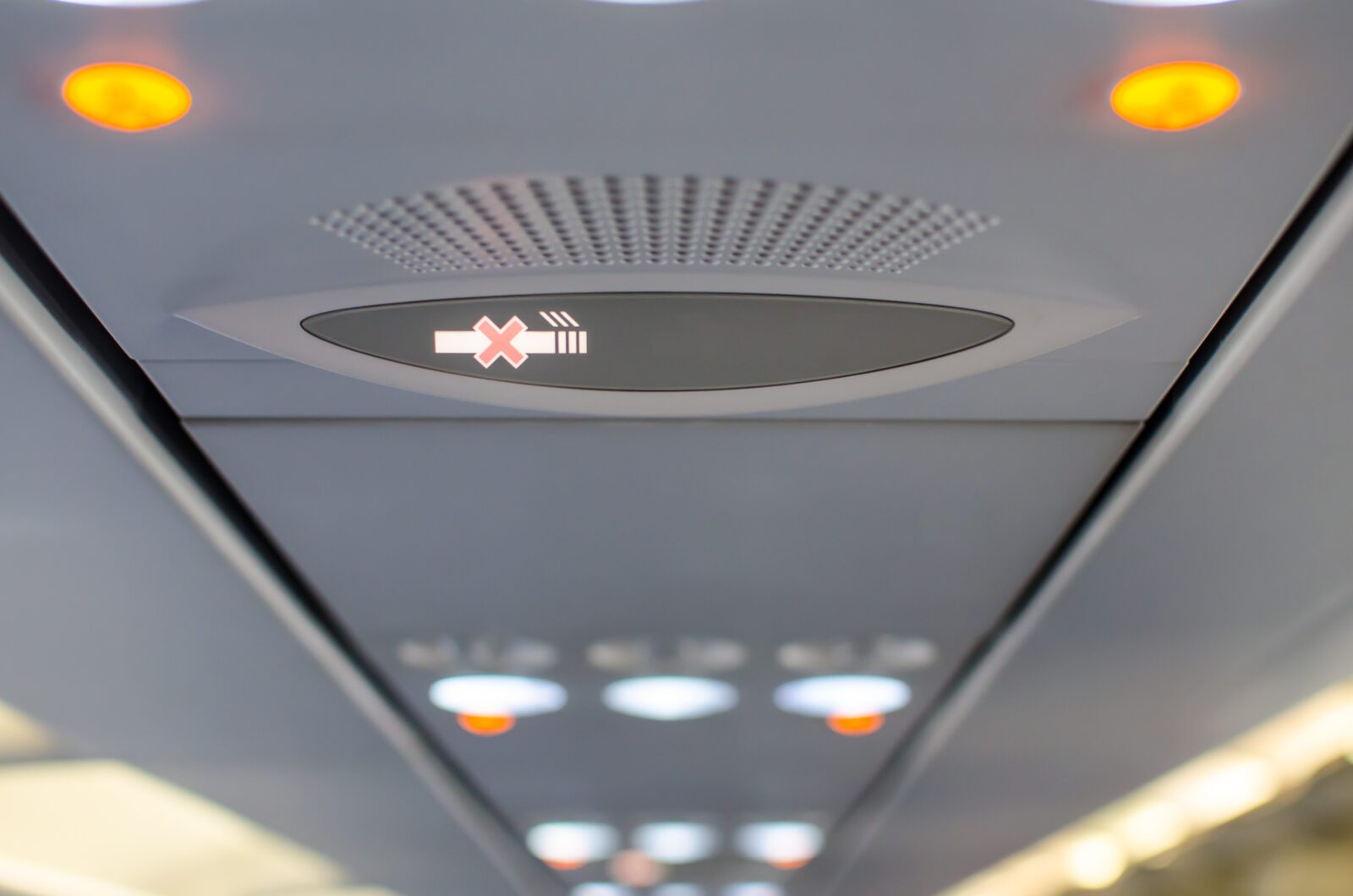
The Federal Aviation Administration (FAA) is issuing a new direct and final rule that will dispense with the need for pilots to be able to turn the ‘No Smoking’ signs on and off even though smoking onboard commercial airplanes has been banned for years, and the signs are never switched off anyway.
The FAA was forced to relook at its outdated regulations in February when United Airlines suddenly grounded its brand new fleet of Airbus A321neo aircraft because the state-of-the-art aircraft were technically not compliant with federal regulations.
The problem, it turns out, is that the computer software on United’s A321neo fleet is hardwired to always have the ‘No Smoking’ signs switched on, and there’s no override for the pilots to turn them off.
United could have requested an exemption from the FAA – in the same way that United managed to get an exemption for its entire Boeing aircraft fleet so that the ‘No Smoking’ signs remain permanently switched on – but it appears that United forgot.
As a result, United temporarily grounded five A321neo while it worked with the FAA to get an exemption sorted, renewing attention on federal authorities to update the outdated regulations.
“The FAA has long recognized the incongruity between the prohibition on smoking in most commercial aircraft and the requirement for manufacturers to construct, and operators to operate, aircraft with ‘No Smoking’ signs that can be turned on and off,” the agency said in its final rule.
“For almost 30 years, the FAA has addressed this incongruity through equivalent level of safety findings and regulatory exemptions,” the final rule continued.
The FAA has decided to skip its normal process of proposing a new rule before making it final because amending this regulation will “have little to no practical effect on the American flying public,” given that smoking has been banned on commercial jets since 1990.
Aircraft manufacturers will still be able to make airplanes with ‘No Smoking’ signs that can be switched on and off, so for all intents and purposes, the status quo is being maintained.
Back in 1995, Delta Air Lines became the first US carrier to request an exemption from the requirement for pilots to be able to turn ‘No Smoking’ signs on and off, and there are now 44 active exemptions held by various airlines for the ‘No Smoking’ sign rule.
Along with allowing ‘No Smoking’ signs to be continuously illuminated, the FAA also allows airlines to install ‘No Smoking’ placards but the agency doesn’t think we’ve got to a point where passengers don’t need to be reminded about the fact that its illegal to smoking onboard a commercial jet.
The final rule concludes: “Even though smoking is prohibited, there are still passengers who may wish to smoke despite the prohibition, and the FAA continues to believe the sign or placard requirement provides a continuous reminder to passengers of the ban on smoking”.
Mateusz Maszczynski honed his skills as an international flight attendant at the most prominent airline in the Middle East and has been flying ever since... most recently for a well known European airline. Matt is passionate about the aviation industry and has become an expert in passenger experience and human-centric stories. Always keeping an ear close to the ground, Matt's industry insights, analysis and news coverage is frequently relied upon by some of the biggest names in journalism.








Is there a reason no smoking lights are required in the first place?
I’ll admit to not flying DL much, but I thought their newer planes at least replaced the ‘no smoking’ lighted signs with ‘turn electronics off’ lighted signs. At least I’ve seen that. Makes much more sense then having a lighted sign for something that is not allowed anytime on any aircraft for the last almost 35 years. I’m not that young, and while I vaguely recall a time when you could smoke in the last couple of rows of economy, it’s a very vague memory, and for all intents and purposes, I can’t recall that time.
I remember the days when smoking aboard was allowed AND they hadn’t yet segregated smoking from non-smoking pax. As a non-smoker who traveled a good bit in those bad old days, I got planted among smokers on cross-country and international flights on a number of occasions.
I noted one interesting thing: smokers were far more sociable on board then the nons.
This shows his illogical the way humans think
Remember the ashtrays in the armrests?